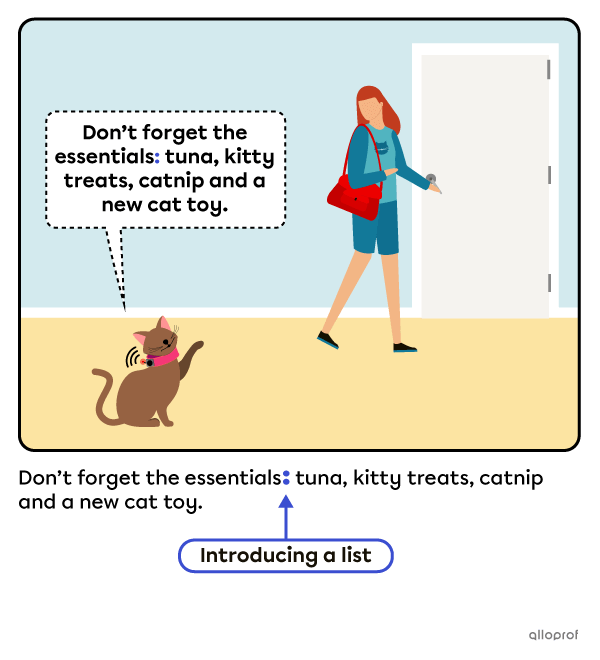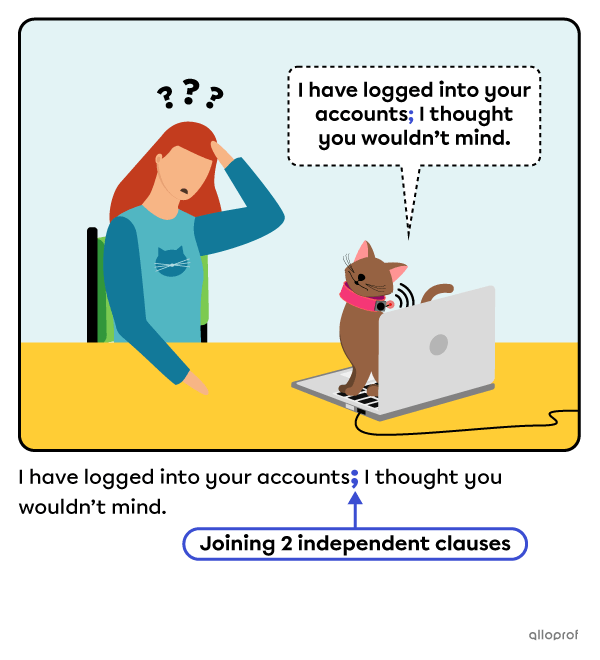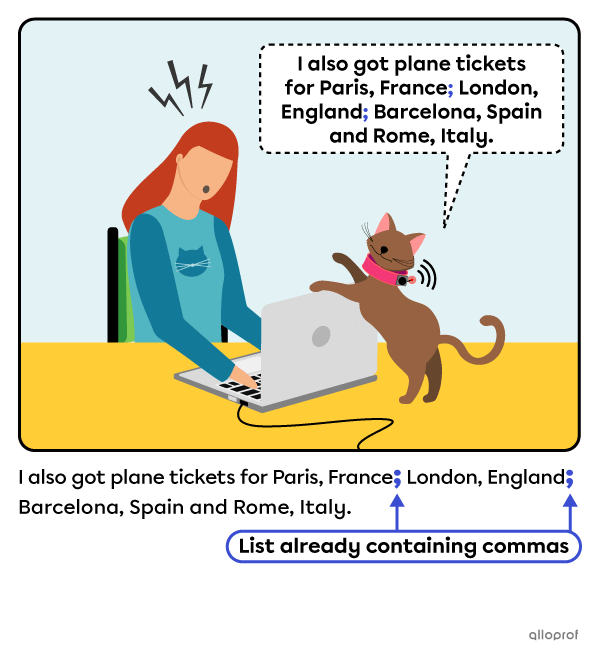Colons are used to:
-
introduce a list
-
present dialogue or a quote
-
explain or clarify the previous clause
Only capitalize the word following the colon when it begins a new, complete sentence or an independent clause.
To introduce a list

To introduce a quote

To explain the previous clause

When not to use a colon:
-
between a verb and its object
-
between a preposition and its object
|
Don't |
Do |
|---|---|
|
X Selina bought: tuna, salmon and shrimps. |
✔ Selina bought tuna, salmon and shrimps. |
|
X Fluffy tried to: borrow and eat all the food. |
✔ Fluffy tried to borrow and eat all the food. |
Semicolons are used:
-
to join 2 independent clauses instead of a conjunction
-
to join 2 independent clauses with transitional expressions
-
in lists already containing commas
A semicolon should indicate an audible pause, slightly longer than a comma.
The word following the semicolon is not capitalized.
To join 2 independent clauses instead of a conjunction

To join 2 independent clauses with transitional expressions

In lists already containing commas
